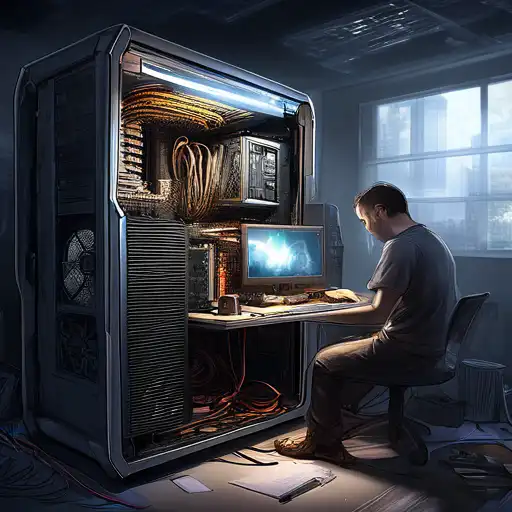Introduction to PC Building
Building your own PC can be a rewarding experience, offering not only a sense of accomplishment but also the opportunity to customize your machine to your exact needs. Whether you're a gamer, a content creator, or just someone looking for a powerful workstation, assembling your own computer allows you to select each component for performance, aesthetics, and budget.
Why Build Your Own PC?
There are several advantages to building your own PC, including cost savings, the ability to upgrade easily, and the satisfaction of creating something uniquely yours. Plus, you'll gain a deeper understanding of how computers work, which can be invaluable for troubleshooting and future upgrades.
Essential Components for Building a PC
Before you start, it's important to understand the key components you'll need:
- Processor (CPU): The brain of your computer, responsible for executing instructions.
- Motherboard: The main circuit board that connects all components.
- Memory (RAM): Temporary storage for data that the CPU uses while performing tasks.
- Storage (SSD/HDD): Where your operating system, applications, and files are stored.
- Graphics Card (GPU): Essential for gaming and video editing, this renders images to your monitor.
- Power Supply (PSU): Powers all components of your PC.
- Case: Houses all your components and comes in various sizes and designs.
Choosing the Right Components
Selecting components that are compatible with each other is crucial. Consider the purpose of your PC, your budget, and future upgradeability when choosing parts. Websites like PCPartPicker can help you ensure compatibility and find the best deals.
Step-by-Step Guide to Building Your PC
Now that you have all your components, it's time to start building. Follow these steps to assemble your PC:
- Prepare Your Workspace: Ensure you have a clean, static-free area to work in.
- Install the CPU: Carefully place the CPU into the motherboard's socket, following the manufacturer's instructions.
- Install RAM: Insert the RAM sticks into the appropriate slots on the motherboard.
- Mount the Motherboard: Secure the motherboard inside the case using the provided screws.
- Install Storage: Connect your SSD or HDD to the motherboard and power supply.
- Install the GPU: If you're using a dedicated graphics card, insert it into the PCIe slot on the motherboard.
- Connect the Power Supply: Attach the PSU to the motherboard, GPU, and storage devices.
- Cable Management: Neatly arrange cables to ensure good airflow and aesthetics.
- Power On: Connect your monitor, keyboard, and mouse, then power on your PC to install the operating system.
Installing the Operating System
Once your PC is assembled, you'll need to install an operating system. Windows and Linux are popular choices, depending on your needs. Follow the on-screen instructions to complete the installation.
Final Thoughts
Building a PC may seem daunting at first, but with the right preparation and patience, it's an achievable project for beginners. Not only will you end up with a machine tailored to your needs, but you'll also gain valuable skills and knowledge. For more detailed guides on each component, check out our PC Components Explained article.
